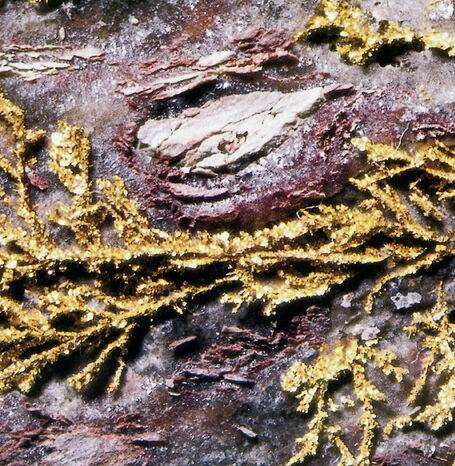
The 560 m high Eisenberg southwest of the town of Korbach is one of the richest gold deposits in Central Europe. Enriched in tectonic fault zones (so-called "ruschels"), the gold contents reach maximum values of 1000 g per ton of rock. In addition to these relatively productive bedrock deposits, gold is also found in younger unconsolidated sediments. Here it is predominantly formed as placer gold, i.e. gold grains or flakes released by weathering, transported and subsequently redeposited.
Gold mining began in these unconsolidated sediments: since at least the 11th century AD, people have been panning for the coveted precious metal on the Eisenberg. Numerous dumps and pits have been preserved until today. Later, around today’s village Goldhausen, a lively open-pit mining operation began, up to 8 meters deep, which was converted into underground mining by the 14th century at the latest.
The heyday of mining was in the 15th and 16th centuries. After that, the reserves were largely exhausted, and mining ended in 1619. By that time, more than 48 tunnels (estimated at about 80) and 45 shafts (estimated at over 100) had been excavated, and the total distance of the excavation levels was over 10 km. The total amount of gold extracted is estimated at about 1.2 tons
Walk in the footsteps of the miners!

